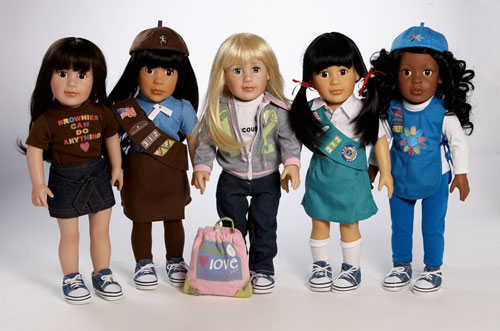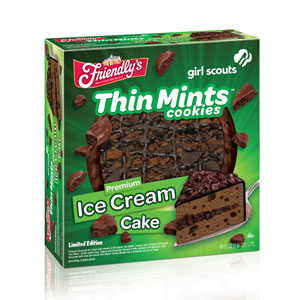The Girl Scouts sell approximately 200 million boxes of Girl Scout Cookies per year. It’s about time the group had a comprehensive licensing program targeting girls, parents, fans of the Girl Scout Cookies (and, let’s face it, who isn’t a cookie fan?), and the more than 50 million Girl Scouts alumnae—that’s a huge demographic. The Wildflower Group signed on a year ago to develop a licensing program for the Girl Scouts. Michael Carlisle, principal of The Wildflower Group, explains the plan.
Nancy Lombardi: What message is the Girl Scouts licensing program trying to convey to consumers? What are the goals and who is the target? Is it to get more young girls to join Girl Scouts or is it for nostalgia for past Girl Scouts? Or is it a mix depending on the product?

Michael Carlisle: Through a range of new products and promotional partnerships, the Girl Scouts licensing program aims to increase awareness of the Girl Scouts’ mission to build girls of courage, confidence, and character who make the world a better place. The target market includes girls ages 5–17, parents, fans of the Girl Scout Cookies, and the more than 50 million Girl Scouts alumnae. There are several goals for the licensing program including communicating who the Girl Scouts are and what they do, retaining and building membership (both girls and adult volunteers), re-engaging alumnae, as well as celebrating the 100th anniversary of the Girl Scouts in 2012.
N.L.: How long is Girl Scouts working with Wildflower Group? What benefits does working with an agency bring Girl Scouts?
M.C.: The Wildflower Group has been working with the Girl Scouts of the USA for a year. The Wildflower Group was brought on to develop a comprehensive, strategic, and well-rounded licensing and merchandising program and to take a proactive role in pursuing licenses on behalf of the Girl Scouts in a broad range of product categories. The Wildflower Group is a full-service licensing agency that offers expertise in all aspects of licensing, including strategy, sales, contracts, product development, marketing, and royalty reporting.
N.L.: What categories is Wildflower looking to enter for Girl Scouts? What have been some of the most successful categories/products? What properties do you see as competitors for this brand?
M.C.: The expanded Girl Scouts licensing and merchandising program will include apparel and accessories, bags and backpacks, toys and games, electronic products, stationery and school supplies, health and beauty aids, giftware, bedding and room décor, and new media. Some of the most successful categories have been food, dolls, and arts and crafts. Given that the Girl Scouts brand reaches across several different product categories and demographics, we would compete with the dominant players in all of the various categories.
 N.L.: Have there been any especially interesting or favorite collaborations?
N.L.: Have there been any especially interesting or favorite collaborations?
M.C.: Some of the favorite collaborations have been with Friendly’s on the Thin Mints ice cream cake, Charisma on a range of 18-inch Girl Scouts dolls, LipSmackers on Girl Scout Cookie-flavored lip balms (launching holiday 2011), and Colorbok on their kids’ crafts products (also launching holiday 2011).
N.L.: Can you share any interesting facts about the Girl Scouts or the Girl Scout cookies? Can you share what are some of the top cookies? How many boxes of cookies are sold each year?
M.C.: The Girl Scout Cookie program is the largest girl-led business in the U.S., producing more female business owners than any university in the country. The program teaches five essential skills: goal setting, decision-making, money management, people skills, and business ethics. Girl Scouts sell approximately 200 million boxes of Girl Scout Cookies per year, with profits staying in local communities to benefit regional Girl Scout councils and troops. The most popular Girl Scout cookie flavors are the Thin Mints, Samoas/Caramel deLites, and the Tagalongs/Peanut Butter Patties.
